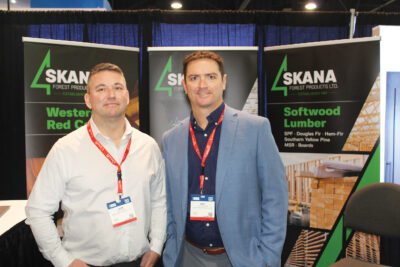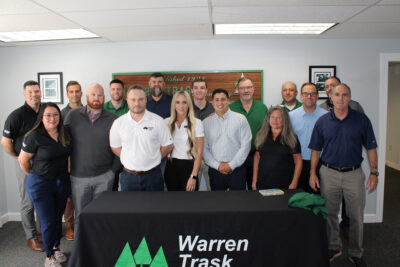The American Wood Council (AWC) has taken a proactive approach to address media coverage of reported lumber supply shortages, seeking to change the narrative and pursue meaningful long-term solutions. AWC has provided monthly press releases providing key data and information to inform the public dialogue, which have been picked up in a number of major publications including the Associated Press, Bloomberg, USA Today, and Yahoo! News. AWC has also issued a two-pager that has been shared widely, including on Capitol Hill and the Administration, which not only includes key economic data and context on supply constraints, but also identifies possible solutions.
What has recently started to be covered, due in large part to AWC’s efforts, is that the wood products industry has been stuck in a 12-year recessionary period, driven by historically low construction rates following 2008, that significantly reduced production capacity. Between 2007-2017, mill closures in the U.S. South resulted in a loss of capacity between 1.7-2 million board feet and closures in the Pacific Northwest represented 10% of the area’s mills. Consequently, in March of last year, the wood products industry was already in a recessionary posture and that affected production, how it managed workforce, and more.
Despite this, the industry rose to this historic occasion in a remarkable fashion. At the height of COVID, our industry’s employees were deemed essential workers and produced at the highest levels since the Great Recession. The entire sector added 1.4 billion board feet of capacity over the past year, which is about the same as the lumber needed to build an additional 100,000 single-family homes.
These are substantial investments and producers need to consider long term market supply/demand and pricing and workforce availability assumptions before making commitments. Mills take nearly two years to complete and current machine delivery times are over 4 years out. Even with these considerations, more growth is coming online with several new expansion projects or new mills announced recently. Some estimates suggest another 1.6 billion board feet could come online even as soon as the end of 2021.
AWC has also shared these messages as a foundation for developing a more productive dialogue with the Biden Administration on opportunities to alleviate supply chain constraints. We have spoken about targeted efforts to address workforce and transportation issues to high-ranking Biden Administration officials, including Secretary of Commerce Gina Raimando, Secretary of Housing and Urban Development Marcia Fudge, Assistant to the President and Director of the National Economic Council Brian Deese, and Assistant to the President and Director of the Domestic Policy Council Ambassador Susan Rice. We have also maintained a strong dialogue with the White House Supply Chain Disruption Task Force, which has led to opportunities to develop several discreet program ideas that can be implemented to help alleviate workforce challenges with federal support and possible funding.
Workforce
Skilled trades, such as electricians and millwrights, have been the most difficult positions to fill in mills across the country. We are also seeing a shift in today’s mills to more automated manufacturing, calling for new skills related to computer science to operate today’s more advance machinery.
Examples of ideas AWC has shared on how the Administration can support skilled trade programs include:
Greater investment in skilled trades programs (high school and trade school levels) and apprenticeship programs, and curriculum development, while dedicating real dollars behind wage support and grant funding for employers to carry additional staffing as apprentices/new hires learn the trades.
Creation of a national standard for critical skilled trades, making it easier to recruit across regions.
National advertising campaigns to promote careers in manufacturing, including the wood products industry.
Transportation
Trucking transportation is another bottleneck that is impacting not only the wood products industry, but many others in this country. There have been some policies (truck weighting, trucking routes) considered in Congress to address this challenge, but none have made it to law. These policies should be revisited.
For example, the bipartisan bill Promoting Women in Trucking Workforce would require the Federal Motor Carrier Safety Administration to establish an advisory board charged with identifying barriers to entry for women in the trucking industry and help identify and establish training and mentorship programs for women.
AWC has shared these and other ideas with the Supply Chain Disruption Task Force, and it is our strong belief that the most meaningful way to address further supply chain constraints in the wood products market is to focus on transportation and workforce constraints. These challenges were present before the pandemic and have exacerbated the current situation.
Housing as Infrastructure
One additional area that AWC has just started to explore with the Task Force are opportunities for the Administration to support private investment in expanding wood products manufacturing by creating federal policies and programs that foster long-term, stable growth in the housing market. As the Administration turns its attention to infrastructure, it should consider developing programs that support longer-term housing needs that in turn can provide the industry with the assurance it needs to expand production to meet demand. Wood products are well-positioned to rise to this challenge once again, providing both a resilient and environmentally sustainable solution that contributes not only to solving housing shortages but to reducing the country’s carbon footprint.









